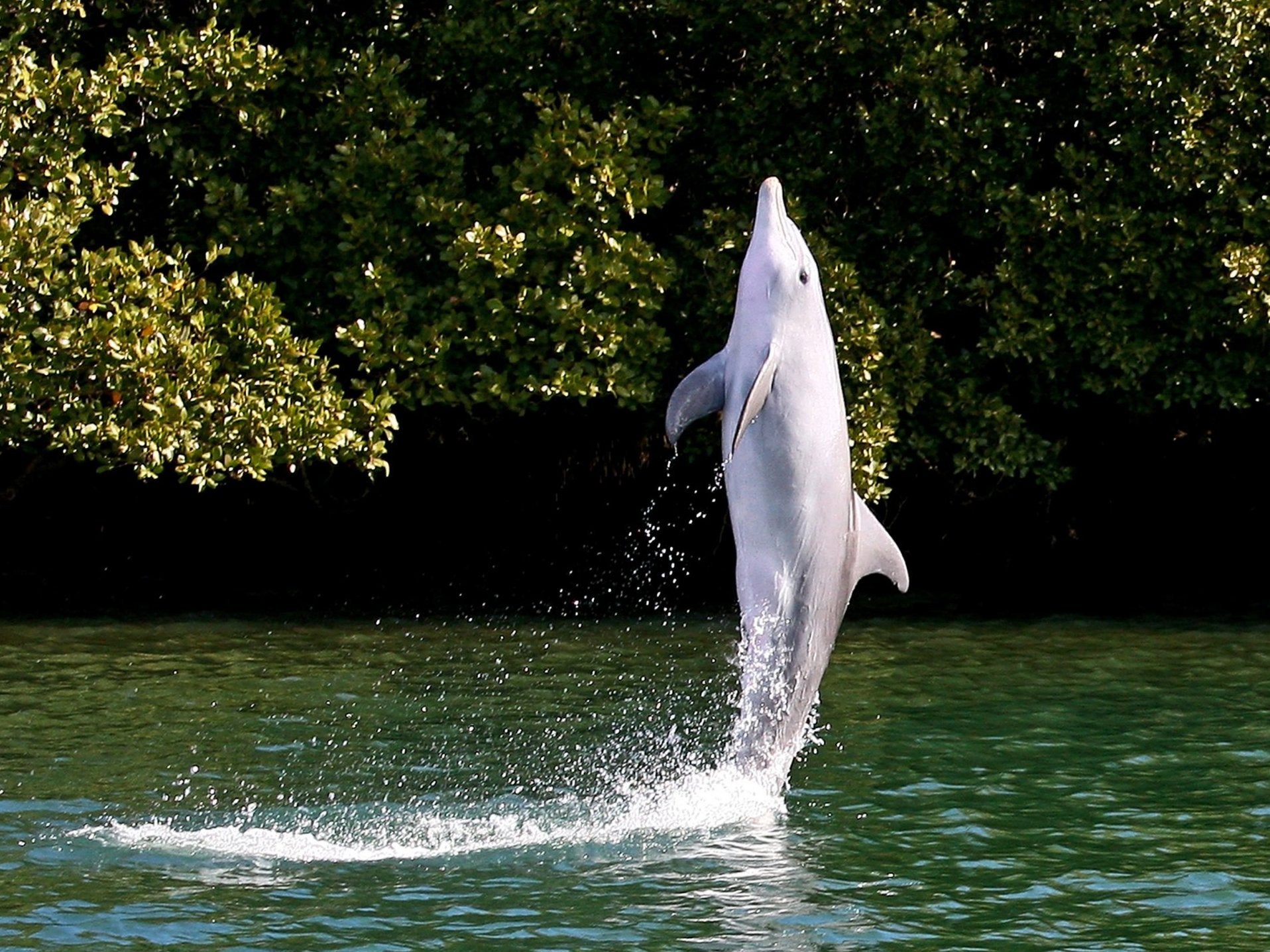Wild dolphins learn to 'walk on water' by copying tricks from captive animals, study finds
Tail-walking – when the animal rises vertically out of the water and moves forward or backwards across it – is rarely seen outside of dolphinaria

Your support helps us to tell the story
From reproductive rights to climate change to Big Tech, The Independent is on the ground when the story is developing. Whether it's investigating the financials of Elon Musk's pro-Trump PAC or producing our latest documentary, 'The A Word', which shines a light on the American women fighting for reproductive rights, we know how important it is to parse out the facts from the messaging.
At such a critical moment in US history, we need reporters on the ground. Your donation allows us to keep sending journalists to speak to both sides of the story.
The Independent is trusted by Americans across the entire political spectrum. And unlike many other quality news outlets, we choose not to lock Americans out of our reporting and analysis with paywalls. We believe quality journalism should be available to everyone, paid for by those who can afford it.
Your support makes all the difference.Wild dolphins have learned how to walk on water by copying tricks developed by captive animals, a 30-year study found.
Scientists in Australia observed that dolphins in Adelaide learned tail-walking – when the animal rises vertically out of the water and moves forward or backwards across it – from a dolphin called Billie which had spent time in a dolphinarium.
Dolphins rarely do this in the wild but it is a standard part of the routine in almost all dolphinaria.
Billie learned tail-walking by observing the performing dolphins and, when released, began performing the trick regularly in the wild.
The behaviour then faded away after a number of years, with the most prolific tail-walker dying in 2014.
The study was led by Whale and Dolphin Conservation with the Universities of St Andrews and Exeter.
Dr Mike Bossley, of Whale and Dolphin Conservation, lead author of the paper, said it was only because he had been studying the Adelaide dolphins for more than 30 years that the significance of tail-walking was recognised.
"I knew Billie's history and was able to track her behaviour and that of the other dolphins in the community over an extended period.
"This enabled me to observe tail-walking spread through the community and then its eventual fade away."
Researchers said that if Billie was the only dolphin to perform the trick it would have been nothing more than an interesting example of individual social learning.
However, after she returned to the wild, other dolphins in the local community soon began performing the behaviour.
Early findings from the study were reported in 2008 – but at that time it was suggested that it was confined to just a small group.
By 2011 nine dolphins had been observed tail-walking in the wild.
After 2011 the number of dolphins tail-walking in the wild declined, with the most prolific tail-walker dying in 2014, leaving only two remaining tail-walkers, both of whom performed the behaviour only sporadically.
University of St Andrews researcher Dr Luke Rendell, a co-author who specialises on researching whale and dolphin cultural behaviour, said: "Once again we see the power of being able to study cetaceans over extended periods that mean something given their lifespans.
"Dr Bossley's long-term commitment has afforded us a revealing insight into the potential social role of imitation in dolphin communities."
The research will be published in the Royal Society's Biology Letters in September.
Press Association
Join our commenting forum
Join thought-provoking conversations, follow other Independent readers and see their replies
Comments